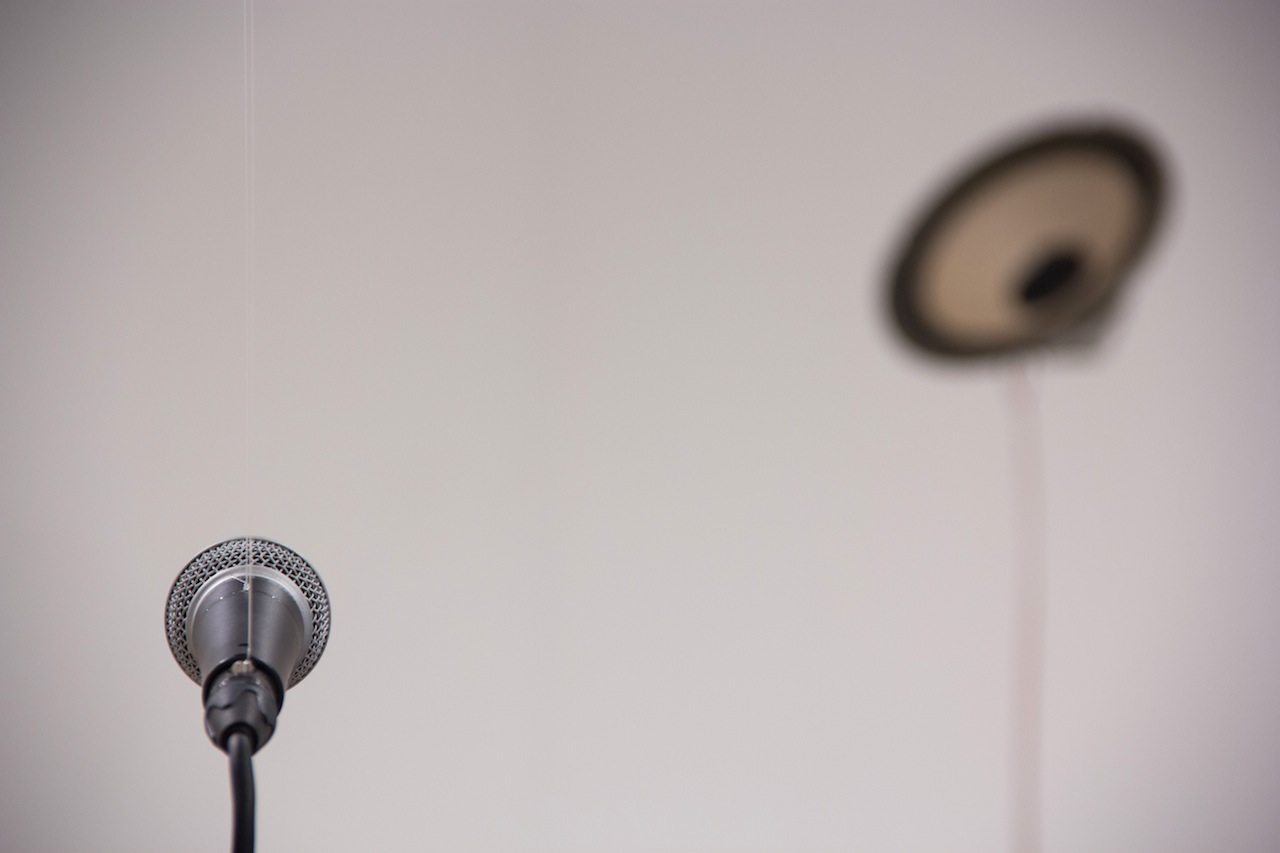A Room Listening to Itself
Sound installation. 2015.
Variable dimensions. 8 SM58 microphones, 8 re-claimed speaker cones, electronics, fishing wire.
Feedback occurs when output of a system is directed back into its input. As output continuously funnels into the input - which in turn routes the signal back to the output, on and on ad infinitum - the system reaches an equilibrium in which notions of cause and effect are rendered meaningless.
In "A Room Listening to Itself", sound is produced exclusively through amplification techniques which "make audible" the physical relationships between microphones, reclaimed speaker cones, and the gallery’s surrounding acoustic environment. Using the acoustic phenomena of tuned microphone feedback alongside recursive amplification networks, the gallery space is turned into a giant resonator that amplifies both acoustic activity and inactivity as a product of spatial relationships. Custom-built computer software constantly re-calibrates the room to ever-changing acoustic situations, aiming for a sonic equilibrium that remains out of reach.
The result is a re-configured acoustic situation, which both musicalizes and modifies the acoustic response of the room. In addition to the controlled feedback network, each microphone signal is played back by several speakers, which are in turn amplified by neighboring microphone and speaker pairs. This recursive amplification network modifies the acoustic response of the room by introducing a crude analog simulation of reverberant reflections and delays, with each re-amplification timbrally modified by the unique sonic characteristics of its respective speaker cone. This approach amplifies the natural resonant frequencies of the room, while introducing new resonances as a product of the spatial location and distance between microphones and speakers.
As gallery visitors walk through the room, they inadvertently modify its acoustic properties by both creating and absorbing sound, modifying the audible relationship between microphone, speaker and acoustic space. The visitors sounds are integrated into the work through the recursive amplification network, which spatially displaces and modifies intentional and unintentional sounds, ranging from visitors’ footsteps, muted conversations, or sound-making directly into particular microphones. In this sense, visitors become part of a feedback loop, both attending to and participating in the relationships found in the gallery space as they move through it.
"A Room Listening to Itself" is made possible by financial support from the Canada Council for the Arts.





photos by Angie Rizzo.